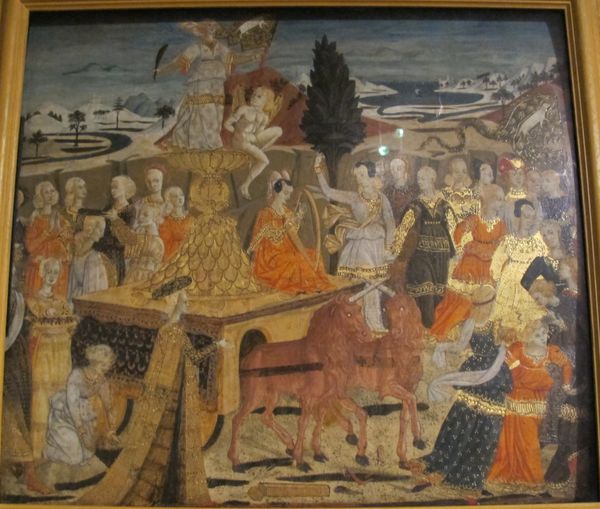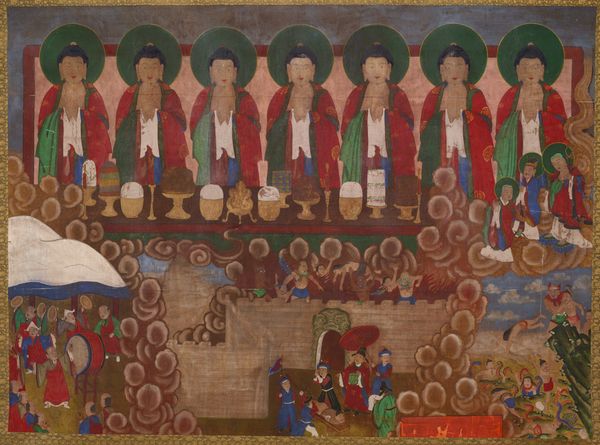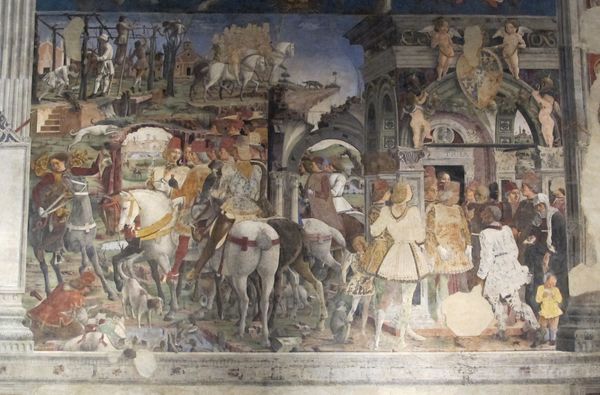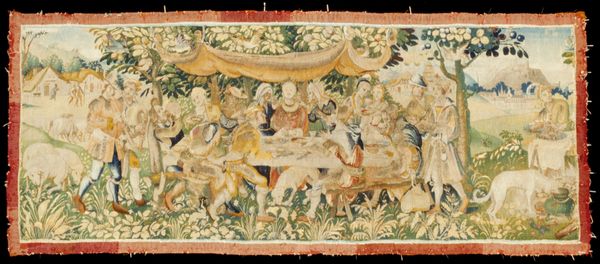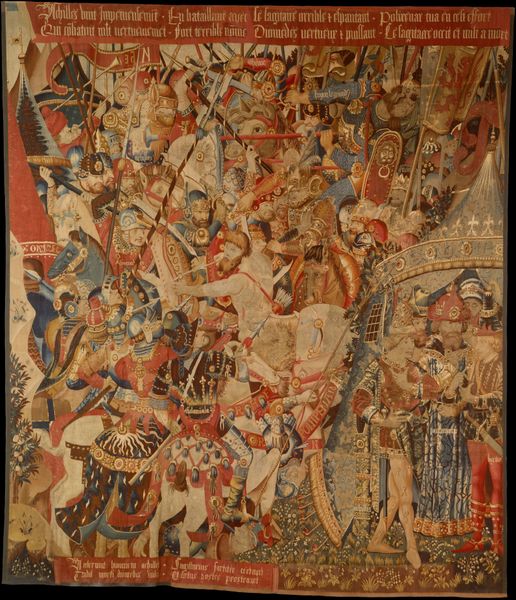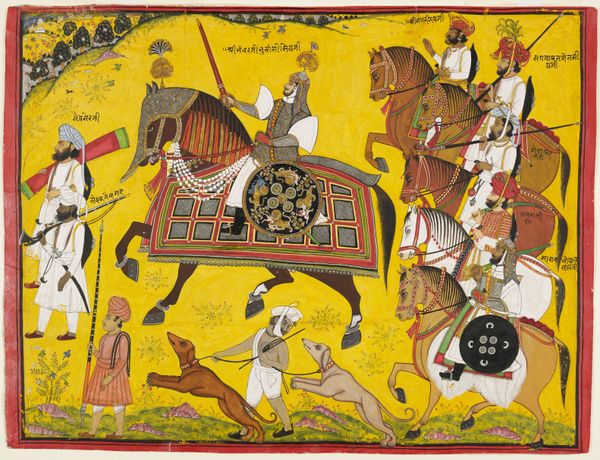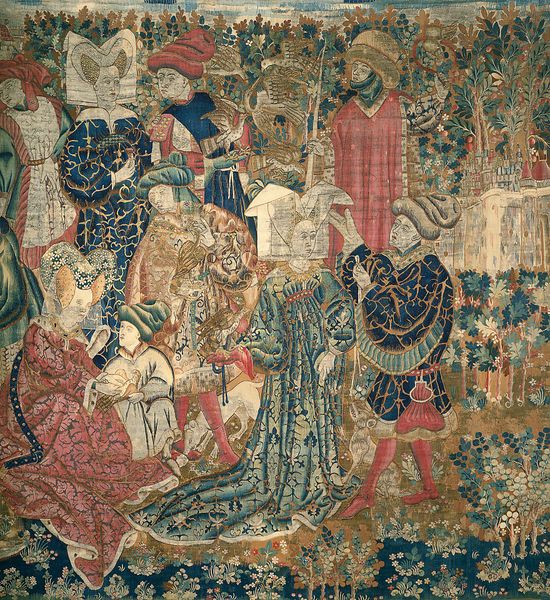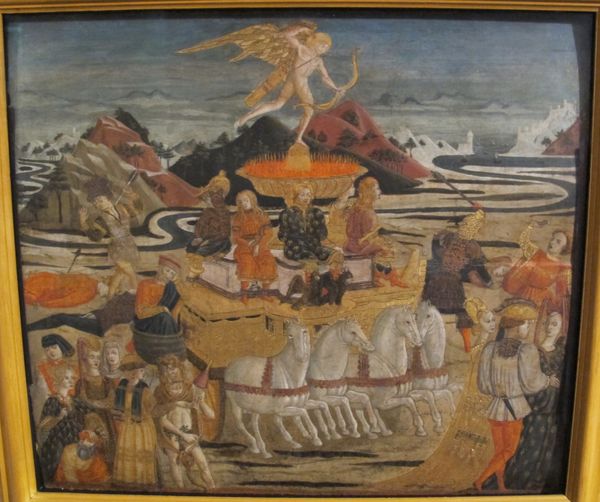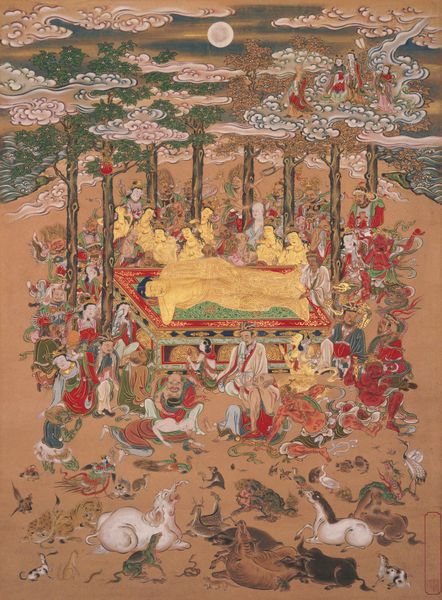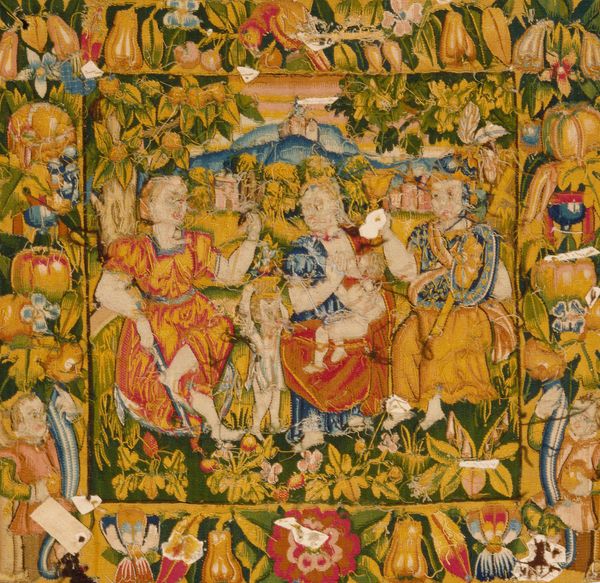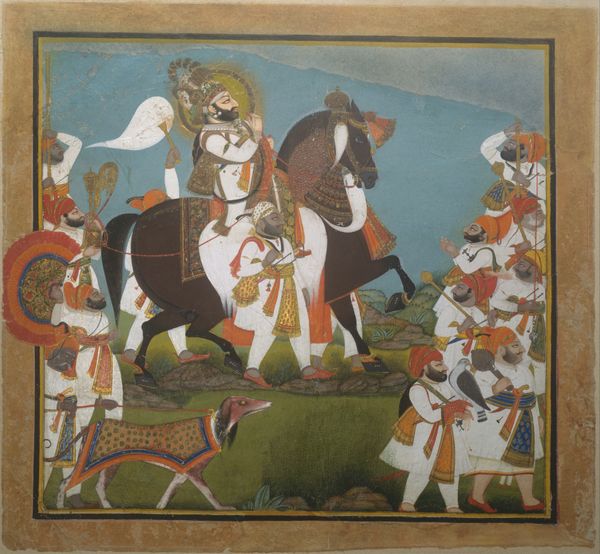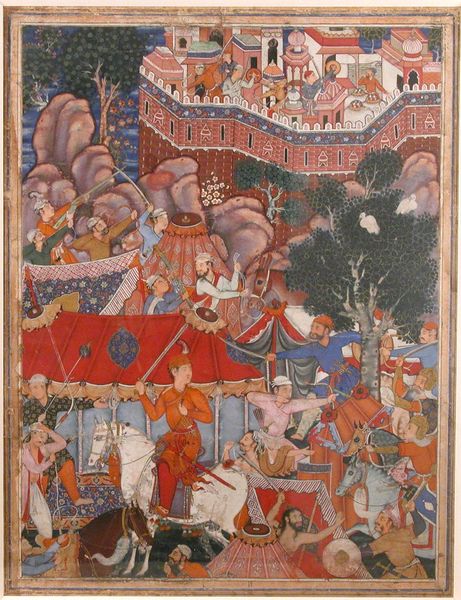
tempera, painting
#
allegory
#
narrative-art
#
tempera
#
painting
#
figuration
#
oil painting
#
history-painting
#
italian-renaissance
Copyright: Public domain
Lo Scheggia, brother of the more famous Masaccio, painted this panel, The Triumph of Fame, in fifteenth-century Florence. It celebrates the classical idea of Fame, depicting a figure of a woman holding a sword and a book, riding on a chariot, surrounded by adoring followers. But consider what the image itself might say about the institutions of art in Florence at this time. Scheggia was a member of the Arte dei Medici e Speziali, the guild of doctors and apothecaries, to which painters also belonged. The prominence of guilds in Florentine life meant that artists had to negotiate these systems of patronage. We should ask what such images can tell us about the social status of the artist. The art historian can look to period documents, guild records, and other archives to piece together the economic and cultural conditions that shaped artistic production. Only then can we understand the true significance of art as something that is contingent on social context.
Comments
No comments
Be the first to comment and join the conversation on the ultimate creative platform.
